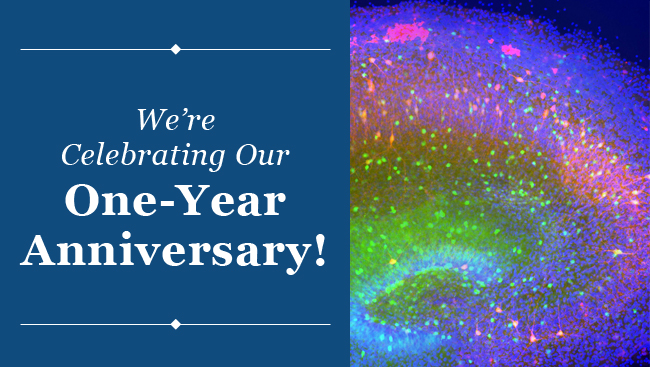The Moral Brain
- Published15 May 2013
- Reviewed15 May 2013
- Author Susan Gaidos
- Source BrainFacts/SfN
Consider a failed murder attempt. Or a simple mistake that causes another to die. Is one of these more acceptable than the other?
One way scientists study how people attempt to determine right from wrong is to look at brain regions that are most active when people contemplate morally challenging scenarios, such as those shown in the above fMRI image.
Neuroscientists don’t pretend to hold the answers as to how people know what is right and what is wrong. But studies show individual biology may influence the ways people process the actions of others.
It turns out we judge others not only for what they do, but also for what we perceive they are thinking while they do it.
Consider the following scenario: Grace and Sally are touring a chemical factory when Grace decides to grab a cup of coffee. Sally asks Grace to pour her a cup as well. Grace spots a container of white powder next to the coffee maker and, knowing that her friend takes sugar in her coffee, she pours some into Sally's cup. As it turns out, the powder is poison, and Sally dies after a few sips.
Most of us would understand and maybe forgive Grace for accidentally poisoning — or even killing — her friend. But what would you think of Grace if you were to learn that she had a hunch that the powder was toxic, yet decided to add it to her friend’s cup anyway?
“Often, what determines moral blame is not what the outcome is, but what [we think] is going on in the mind of the person performing the act,” says Rebecca Saxe, a neuroscientist at the Massachusetts Institute of Technology who studies how the brain casts judgment.
Scientists are learning the ways the brain responds when we attempt to determine right from wrong. Ultimately, they hope such information will help show how the brain processes difficult situations.
What was she thinking?
One way scientists study how we make right-or-wrong judgments is to look at brain regions that are most active when people attempt to interpret the thoughts of others.
In some studies, participants read stories about characters that either accidentally or intentionally cause harm to others while scientists use functional magnetic resonance imaging (fMRI) to track how brain activity changes. Such studies show that thinking about another’s thoughts increases the activity of nerve cells in a brain region known as the right temporo-parietal junction located behind the right ear.
As it turns out, some of these cells respond differently when presented with an intentional harm versus an accident. By zeroing in on the distinct patterns of activity in these cells, Saxe’s group discovered that they could accurately predict how forgiving the participants would be.
“People who say accidents are forgivable have really different [activity] patterns” than those less willing to overlook the unintentional harm, Saxe says.
Thinking about harm
Neuroscientists also study how people respond when asked how they themselves would act in morally challenging scenarios.
In one popular moral dilemma scenario, scientists ask participants to imagine the following: A runaway train is barreling down on five people. The only way to save these people is to hit a switch that would redirect the train onto tracks where it will kill only one person. Would you hit the switch?
What if, instead, you had to push a man off of a bridge to stop the train, knowing that doing so will kill him but save the lives of the others?
Studies ran these scenarios by people with damage to the ventromedial prefrontal cortex — a region believed to be involved in the processing of emotions — and those without damage. Both groups equally support the decision to hit the switch to redirect the train to save more lives.
However, those with damage to the ventromedial prefrontal cortex are much more likely to endorse pushing the man in front of the train, a more direct and personal harm. These studies, led by neuroscientist Antonio Damasio of the University of Southern California, suggest the important role of emotion in the generation of such judgments.
To test how important the ventromedial prefrontal cortex is when we judge the actions of others, Damasio along with neuroscientist Liane Young of Boston asked a small group of people with damage to this region to evaluate variations of the Grace and Sally story.
When told that Grace deliberately puts powder she believes is toxic into Sally’s cup, only to later learn the powder was sugar, healthy adults regularly condemn Grace’s failed attempt to harm her friend. However, people with ventromedial prefrontal cortex damage shrug off Grace’s action. As they see it, as long as Sally survives, Grace’s actions are no big deal.
Damasio says these results, along with others, reveal the role of the ventromedial prefrontal cortex and emotion in evaluating harmful intent.
That’s not fair
There is also evidence that changes in the chemistry of the brain influence how we behave when others treat us unfairly.
To measure how changes in brain chemistry affect people’s reactions to unfairness, University College London neuroscientist Molly Crockett and others gave study participants a drink to drive down levels of the neurotransmitter serotonin in the brain before asking them to play the ultimatum game.
In the ultimatum game, participants are paired with strangers they are told have been given a lump sum of money to share with them. The stranger determines how to divvy up the money, and proposes a split to the participant. The participant decides whether or not to accept the stranger’s offer. If the participant accepts, both players walk away with some money. However, a participant may reject the offer, believing it to be unfair, leaving both players empty-handed. Crockett found that people with lower levels of serotonin were more likely than others to reject offers they deemed to be unfair.
When the scientists examined the brain activity of participants with depleted serotonin levels as they accepted or rejected the offers, they found that rejecting offers led to increased activity in the dorsal striatum — a region involved in processing reward. Crockett says the findings suggest that dips in serotonin can shift people’s motivations to punish unfairness. For instance, when you deplete serotonin, people who are normally more forgiving may become happier with revenge, she says.
Crockett notes that serotonin levels may fluctuate when people are hungry or stressed. The findings illustrate how individual differences in biology might influence the way people view, and respond to, the actions of others.
CONTENT PROVIDED BY
BrainFacts/SfN
References
Crockett MJ, Clark L, Tabibnia G, Lieberman MD, Robbins TW. Serotonin modulates behavioral reactions to unfairness. Science. Jun 27;320(5884):1739 (2008).
Crockett MJ, Clark L, Hauser MD, Robbins TW. Serotonin selectively influences moral judgment and behavior through effects on harm aversion. Proceedings of the National Academy of Sciences, Oct 5:107(40):17433-8 (2010).
Crockett MJ, Apergis-Schoute A, Herrmann B, Lieberman M, Müller U, et al. Serotonin Modulates Striatal Responses to Fairness and Retaliation in Humans. The Journal of Neuroscience. Feb 20:33(8):3505-3513 (2013).
Dodell-Feder D, Koster-Hale J, Bedny M, Saxe R. fMRI item analysis in a theory of mind task. Neuroimage. Mar 15; 55(2):705-12 (2011).
Greene JD, Sommerville RB, Nystrom LE, Darley JM, Cohen JD. An fMRI investigation of emotional engagement in moral judgment. Science. 293(5537):2105-8 (2001).
Koenigs M, Young L, Adolphs R, Tranel D, Cushman F, et al. Damage to the prefrontal cortex increases utilitarian moral judgements. Nature. 446(7138):908-11 (2007).
Koster-Hale J, Saxe R, Dungan J, Young LL. Decoding moral judgments from neural representations of intentions. Proceedings of the National Academy of Sciences. April 2; 110(14):5548-53 (2013).
Immordino-Yang MH, McColl A, Damasio H, Damasio A. Neural correlates of admiration and compassion. Proceedings of the National Academy of Sciences. May 12;106(19):8021-6 (2009).
Saxe R, Wexler A. Making sense of another mind: the role of the right temporo-parietal junction. Neuropsychologia. 43(10):1391-9 (2005).
Young L, Bechara A, Tranel D, Damasio H, Hauser M, et al. Damage to ventromedial prefrontal cortex impairs judgment of harmful intent. Neuron. Mar 25;65(6):845-51 (2010).
Also In Archives
Trending
Popular articles on BrainFacts.org


















